Tag: electrician diploma
Residential, Commercial, Or Industrial: Which Path Will You Take After Electrician Training?
June 22, 2023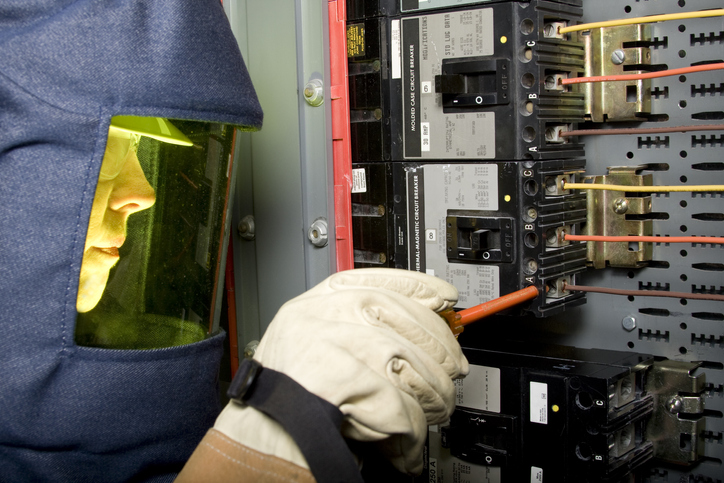
Many people who enrol in the Construction Maintenance Electrician Diploma Program at North American Trade Schools (NATS) already have a clear idea of where they would like to work before they even register for the program. Conversely, some others prefer to go with the flow and see what piques their interest along the way.
Irrespective of which side of the spectrum you fall in, the question of which path you’ll take after electrician training is an important one since there are typically differences between residential, commercial, and industrial electricians.
Ultimately, the decision should come down to which career path best suits your interests and career goals. To help narrow your focus leading to an informed decision, we’ll explore each of these career paths in this blog.
Residential Work After Electrician Training
Residential electrical work focuses on homes, apartments, and other residential properties. On a typical day as a residential electrician after your Electrician training, you’ll be responsible for installing, repairing, and maintaining electrical systems in these settings. This often involves tasks like wiring new homes, troubleshooting electrical issues, or upgrading outdated systems. One of the advantages of working in the residential sector is the opportunity to work directly with homeowners, helping them improve their living spaces and ensuring their electrical systems are safe and efficient. Residential work also offers more regular working hours, allowing for a better work-life balance.
Commercial Work After Electrician Training
On the other hand, commercial electricians deal with electrical systems in non-residential buildings such as offices, retail stores, and public facilities. Commercial work often involves large-scale projects, such as installing electrical systems in new commercial buildings or upgrading existing systems to meet code requirements. Typically, commercial electricians execute tasks like setting up lighting systems, installing security systems, or performing routine maintenance. Commercial work can be fast-paced and diverse, providing opportunities to work on a wide range of projects and collaborate with other professionals in the construction industry.

Industrial Work After Electrician Training
Industrial electrical work takes you into the realm of factories, power plants, and other industrial settings. In this sector, you’ll work with complex electrical systems that power heavy machinery, production lines, and industrial processes. Industrial electricians often use high-voltage systems, motors, control panels, and automation technologies. This type of work requires a strong understanding of industrial equipment and safety protocols. Industrial electricians may troubleshoot electrical issues under time pressure to minimize downtime and keep production running smoothly. Working in the industrial sector can be challenging but highly rewarding, with opportunities for career advancement and specialized training.
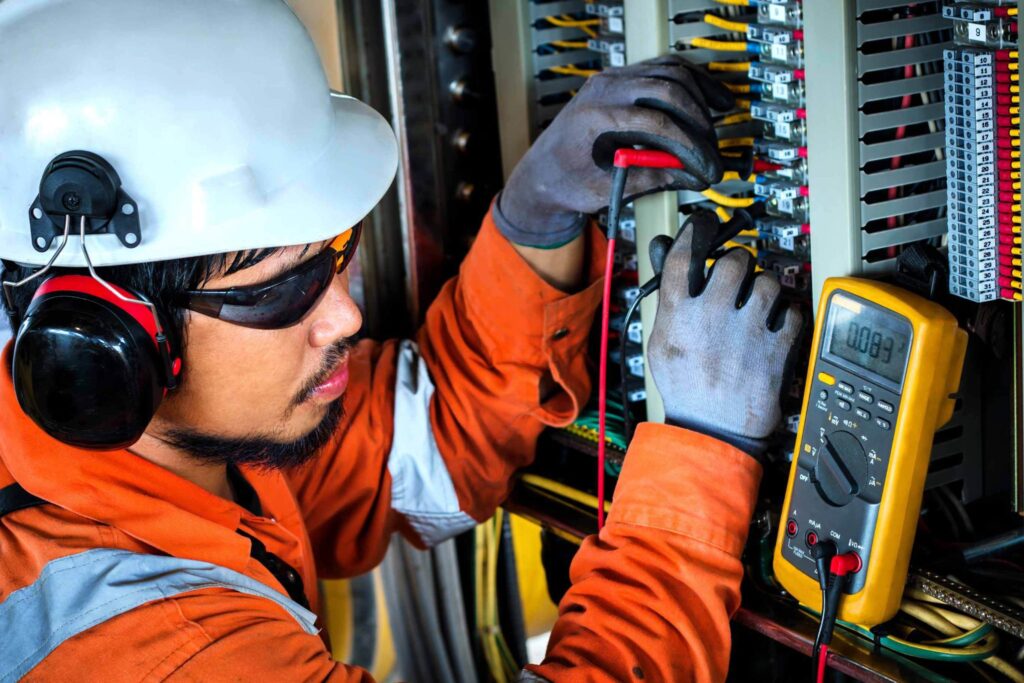
Which Path is Right For You?
When deciding which path to take after electrician training, it’s important to consider your personal interests, skills, and long-term goals. Do you enjoy working in various settings or prefer the stability of residential work? Are you intrigued by the complexity of industrial electrical systems or drawn to the fast-paced nature of commercial projects? It’s also worth noting that you can start in one sector and transition to another later in your career. Many electricians gain experience in one area before exploring new opportunities. Regardless of your chosen path, ongoing learning and professional development are essential.
If you’re interested in obtaining a more detailed understanding of each of these paths and the processes associated with them, consider registering for the Construction and Maintenance Electrician diploma Program at NATS.
Are you ready to start training toward your career at an Electrician college?
Contact NATS to learn how you can get started!
3 Rough-In Tips to Remember After Electrician Training
June 07, 2023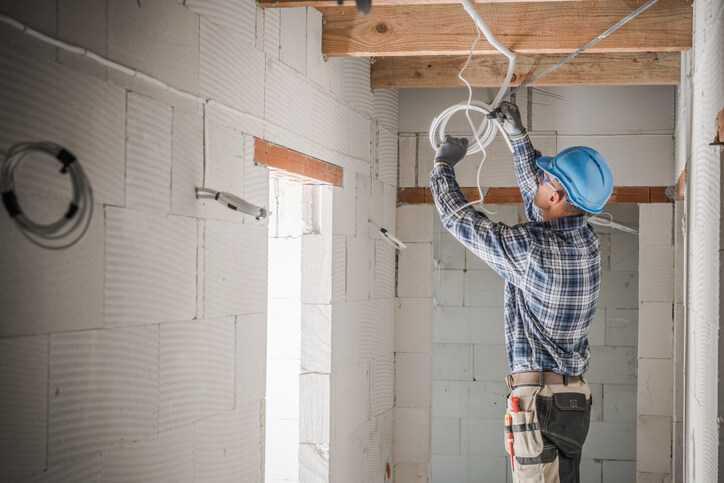
Rough-in wiring involves installing electrical wiring, boxes, and conduit in commercial or residential buildings before the walls and ceilings are completed. It’s a necessary process that sets the foundation for a safe and efficient electrical system in any building.
Regardless of the type of project being executed, it’s important to get the rough-in phase done right the first time. Ripping up the drywall to fix issues down the line can be messy, not to mention expensive. It’s also essential to be careful with this task to avoid the risk of electric and fire hazards. Attention to detail and adherence to electrical codes are necessary for a high-quality installation.
After completing your Construction & Maintenance Electrician Pre-Apprenticeship diploma program, you’ll often be tasked with projects like these. Here, we’ll discuss three practical rough-in tips that will prove invaluable throughout your career. Incorporating these tips into your work routine after completing electrician training will help you build a reputation for excellence and contribute to electrical systems’ safe and efficient operation.
1. Plan and Prepare Adequately After Electrician College
Before starting any rough-in work, careful planning is crucial. Begin by reviewing the electrical plans and blueprints for the building to understand the project scope clearly. Take note of the locations for outlets, switches, light fixtures, and other electrical components.
Next, ensure you have all the tools and materials readily available. This includes wires, cables, conduits, junction boxes, and fasteners. Organize your supplies to avoid unnecessary delays during the installation process.
Additionally, before commencing any rough-in work, shut off the power supply to the area where you will be working. As taught in Electrician training, safety should always be the top priority. Taking this precautionary measure will prevent accidents or electrical shocks.
2. Get Accurate Measurements and Layouts
During the rough-in phase, precision is essential. Accurate measurements and layouts ensure that electrical components are installed correctly, avoiding future problems or the need for costly rework. Students who undergo their Electrician diploma program know this process is often emphasized during their training.
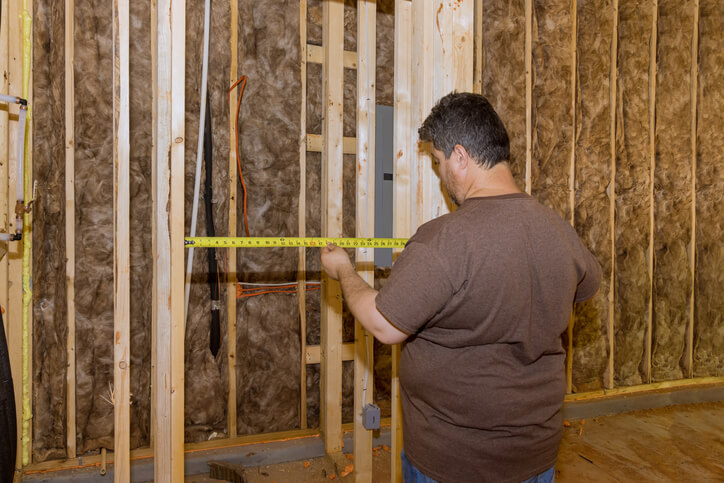
Mark the locations of electrical boxes on the walls and ceilings according to the provided blueprints, then use a tape measure and level to ensure the measurements are precise. Consider any obstructions, such as studs or pipes that may affect the placement of the boxes. Similarly, when running conduit or cables, maintain consistent spacing and alignment. This will facilitate future wire-pulling and make identifying and troubleshooting issues easier if necessary.
Further, pay close attention to electrical code requirements, including minimum clearance distances around boxes and conduits, and remember compliance with electrical codes is crucial for safety and ensures the installation meets industry standards.
3. Label and Document Each Step
The rough-in phase is the foundation for the entire electrical system, and documenting your work is invaluable for future reference. As you install wires, cables, and conduits, take the time to label them appropriately by using tags or markers to indicate the purpose and destination of each cable or wire. This makes it easier for future electricians or technicians to identify and troubleshoot issues.

You should also create a comprehensive documentation system that includes diagrams, plans, and any modifications made during the rough-in process. This information will be invaluable for future maintenance, repairs, or upgrades. Remember to photograph the rough-in work before the walls and ceilings are closed. These photos can provide evidence of a job well done and a visual reference if needed.
Are you looking to join a world-class Electrician college?
Contact NATS to learn how to get started.
Networking Tips For An Apprentice After Electrician Training
February 28, 2023
Networking is important no matter which industry you are in, because it allows you to form mutually beneficial relationships with other professionals in your field. Once you become an apprentice after electrician training, you’ll be looking to grow in the trade – honing your skills and gaining access to professional opportunities. Networking is a great way to meet and stay in touch with seasoned industry experts and those just starting out like you. Having a broad network can open many doors for you professionally, helping you stay on top of new opportunities.
Read on for some great networking tips to keep in mind during your training and throughout your career.
Partake in Industry Events and Conferences
Industry events and conferences are great ways to network with people in your industry. While larger conferences do not necessarily happen often, it is important to attend them because you will have the opportunity to learn from and discuss with other electricians and apprentices, and create beneficial relationships.
A great way to learn about these conferences and events is either online or through your instructors during your Electrician diploma. Your instructors are experienced in the industry and have already built their network over several years. They are great starting points for discovering these events and conferences. Online, you will find many different events, and the beauty of these is that they occur digitally and can be attended no matter where you are.

Use Social Media to the Fullest Extent
Social media is a great networking tool that you can utilize at any point, and it will be beneficial for years to come. There are two primary social media networks you should be using to network during and after Electrician training – these are LinkedIn and Facebook. LinkedIn is great for forming connections with qualified electricians or apprentices. You never know when someone who you interacted with on social media may be able to present an opportunity to you, and vice versa. A great starting point is your instructors and fellow apprentices.
Facebook is a little different in that it would be more advisable to join a local electrician group instead of adding people as friends. This allows you to interact with people in the same career as you and enables knowledge sharing. There may also be opportunities for apprentice electricians posted on these groups. The key is to maintain consistent contact. Speak to instructors and fellow apprentices about electrician groups, otherwise, a Facebook search can also put you in the right direction.

Keep in Contact With People You Meet in Electrician Training
During electrician training, you will interact with your instructors and classmates, so try to develop relationships that will help you to expand your network. Keep in contact with them after you have completed your training, because your instructors can introduce you to people in the industry, since they’re extremely knowledgeable and have contacts there. Your peers may also find other opportunities that they can share with you. It takes time and effort, but having a great network will reap its benefits in the longrun.
Are you ready to begin Electrician college?
Contact NATS to learn how you can get started.
How to Succeed in Your Electrical Apprenticeship After Electrician Training
November 15, 2022
The road to becoming a licensed electrician is a rewarding one. First, you’ll learn the fundamentals of the trade in a certified training program. Once you’ve learned the basics, you’ll have the opportunity to earn money as you learn during your apprenticeship. This is a great time to hone your skills, learn the electrical codes in your area, purchase the right tools, learn how to use them properly, and make meaningful professional connections. Let’s explore some effective ways to succeed during your electrical apprenticeship!
Ask Questions to Absorb as Much Information as You Can
You may need to approach your apprenticeship differently than you might other positions. While being able to earn an income is a huge perk of an electrical apprenticeship, your main priority should be to learn and practice your skills. Whenever you can, try to absorb new information. Listen attentively when others offer feedback and try to remember it. Keep your eyes open when licensed electricians complete tasks.
As you watch, look for parts of the process that don’t make sense to you and ask clarifying questions. As your apprenticeship progresses, try to answer some of your own questions using your prior knowledge and experience. That being said, it’s always a good idea to double-check when you’re unsure. Remember that mistakes are a normal part of the learning process, and try your best to turn yours into valuable learning experiences after electrician college!
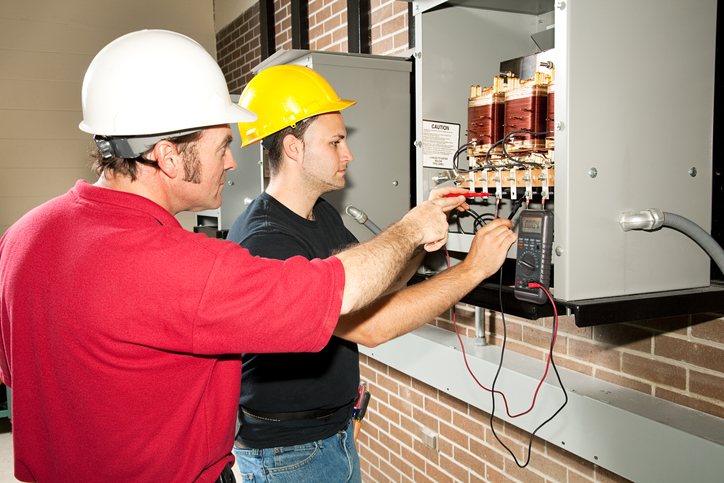
Understand the National Electrical Code
This one may take some time. The Canadian Electrical Code is a long document published by the Canadian Standards Association. It’s full of information about how to safely install and maintain electrical equipment in Canada. It’s a great idea to make sure you have access to a copy that you can refer to when you need extra clarification. A clear understanding of electrical standards will help you stay safe on the job, as well as protect the safety of clients. Have faith in the learning process! With time, you’ll become familiar with the electrical code in your area. Keep in mind that the Canadian Electrical Code is revised every three years, so be sure to stay up to date.

Master the Art of Networking After Electrician Training
During and after electrician training, networking should be a priority. Your success in most fields will depend heavily on your ability to build meaningful relationships in the workplace–in addition to your skill and experience level, of course. On the job, try to be personable and open to meeting new people. You have no idea what conversation could lead to a major opportunity for career advancement, so always put your best foot forward and don’t hesitate to share your contact information when you’ve established a connection.
Your electrical apprenticeship will be an exciting phase of your career. The Construction & Maintenance Electrician Pre-Apprenticeship Diploma Program can help you find success as you learn and earn. Receive hands-on training on electricity principles and applications, blueprint reading, framing, and more!
Ready to enrol in earning an electrician diploma?
Contact NATS to learn more!
5 Electrical Hazards to Watch Out for when Earning an Electrician Diploma
July 12, 2022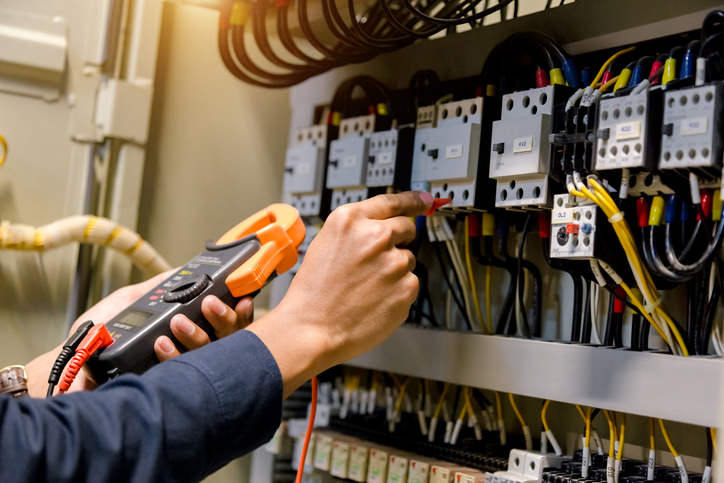
If you’re interested in problem-solving and using your hands in a fast-paced career, you might consider becoming an electrician. In addition to flexible schedules, Job Bank Canada forecasts that close to 25,000 new job openings will become available between 2019-2028 in Canada alone.
North American Trades Schools provides electrician certification for residential, commercial and industrial levels, preparing you with the knowledge and hands-on training to feel confident and safe at the workplace. As a student in electrician school, familiarizing yourself with safety practices and common hazards will help you to stay safe throughout your training and future career.
Keep reading to learn about five common electrical hazards and how to prevent them so you can improve your safety while earning your electrician diploma.
1. Wearing Personal Protective Equipment Is Essential When Earning Your Electrician Diploma
Electrocution, electric shock, burns and falls are all common injuries that an electrician must be hyper aware of avoiding. During your electrician training, you’ll learn that the first preventative measure that you can take is equipping yourself with the appropriate Personal Protective Equipment (PPE).
There are many different types of PPE you can protect yourself with, depending on the scope of the job. Insulated gloves, matting, and ladders can provide a protective layer eliminating a pathway for electricity to travel through the body. Face shields, non-metal helmets and flame retardant clothing can also add extra protection. Additionally, you should always inspect your PPE before use, and be sure to safely store it after completing a job.

2. Beware of Improper Grounding and Unwanted Voltage
Grounding is the method of connecting an isolated conductor to a ground, preventing unwanted transmission and voltage. When an electrical system is not appropriately grounded it can create voltage that cannot be eliminated safely, as the exposed parts of a system can become energized and cause electrocution. This can include the metal parts of motors, appliances or electronics that are plugged in.
To prevent electrical hazards, equipment must always be properly grounded. Using a Ground Fault Circuit Interrupter (GFCI) is a recommended safety measure that can safeguard you from improper grounding when working with electric systems. If a ground fault is detected in a circuit protected by a GFCI, it automatically stops the current, protecting you from electrocution.
3. Following Lockout and Tagout (LOTO) Procedures Keep You Safe
During your electrician certification, you’ll learn about using the LOTO method to control hazardous energy and prevent the accidental use of equipment while it is unsafe, being inspected, or being worked on.
Lockout and Tagout ensures that equipment is appropriately shut off and unable to be restarted prior to the completion of any work being done. When the power sources are off, they are locked with a tag attached identifying the reason the LOTO is there. The worker that places the LOTO is the only one with the key, ensuring that it is not accidentally started by anyone else.
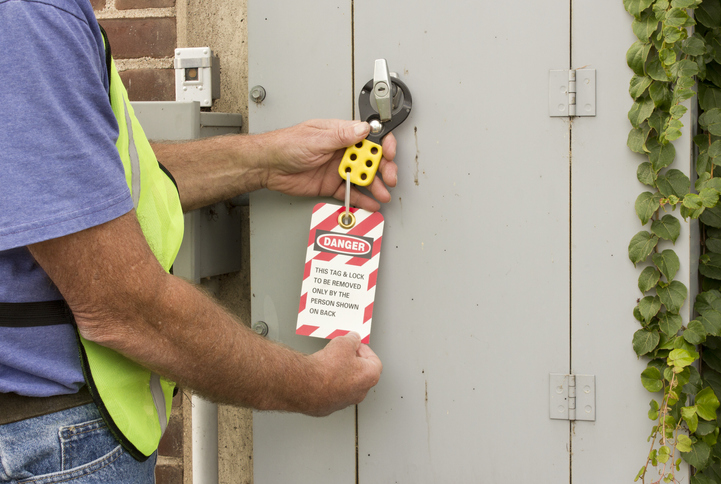
4. Working in a Wet Environment Increases the Chance of Electrocution
From spilled water near an electrical outlet to leaks from plumbing issues, electricity and water are always a dangerous combination, together increasing the chances of electrocution. It’s important to keep tools, equipment and wires away from damp and wet areas, especially if equipment has any damages to its insulation. Wear and tear can make it easier for water to make contact with the conductors, leading to electrocution. As with improper grounding, protecting circuits with a GFCI ensures that if electrical shock occurs due to these conditions, the current will immediately be stopped.
5. Overloaded Power Strips and Outlets Are a Common Hazard
One of the most common electrical hazards in many homes and businesses are overloaded power strips and outlets. Outlets are designed for a limited amount of electricity output. Plugging in an excess of high-voltage devices can overload a power strip, increasing the chances of an electrical fire. Choosing power strips with surge protection will help to reduce the risk of fire, as the breaker stops the current if it gets overloaded. However, when working with heavy electric equipment as an electrician, you cannot rely on common surge protectors and power strips. Instead, a safer alternative is a three-way extension with GFCI for added protection.
With an extensive hands-on learning experience, as well proper safety techniques and leading practices, you will be fully prepared to identify and avoid common electrical hazards throughout your future career.
Are you interested in earning your electrician diploma?
Contact NATS to learn more!
What Electrician Diploma Students Should Know About Reading Layouts
October 08, 2019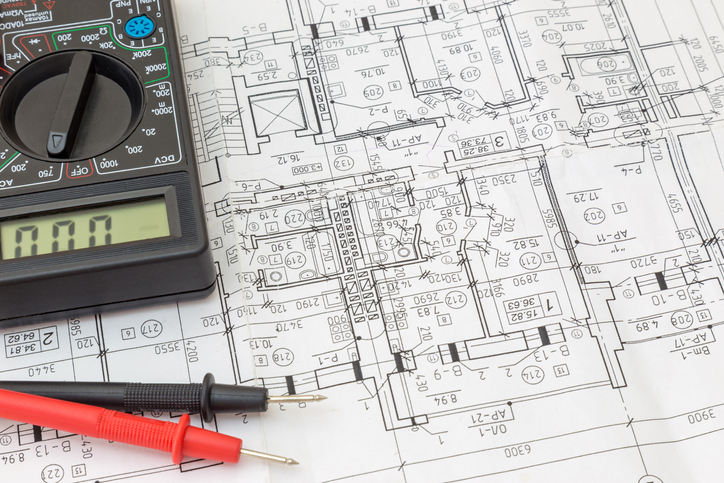
As an electrician (particularly a construction electrician), it’s important to be able to understand how to read electrical blueprints or layouts. With these layouts, you will have a better understanding of how electrical systems are to be built, and where all the various parts (eg. light fixtures, switches, wires) need to go. That said, they can be a bit complicated to look through at first. Luckily, it’s easier to get the hang of than you might think.
Regardless of all the symbols and more specialized aspects you may encounter while reading them, there are ways you can effectively interpret an electrical plan without too much trouble. Here’s what you should know about reading layouts if you’re studying to become an electrician.
Read What’s in the Architectural Layout Before the Electrical One
When you look at the floorplan for the building’s architectural layout first, you’ll get a good sense of how much space you have to work with, where things are, and where electrical parts should logically go. Not only that, but you’ll have information about the layout that isn’t necessarily in the electrical portion of the plan. This can help you identify potential conflicts between the architectural and electrical plans that you may not have noticed by only looking at the electrical plan. Either way, you’re going to need to understand what sort of parameters and space you have to work with, since you’ll have to work within them to make sure all the wires are in the right place and able to deliver power throughout the building in ways that are safe for everyone and compliant with bylaws and regulations.
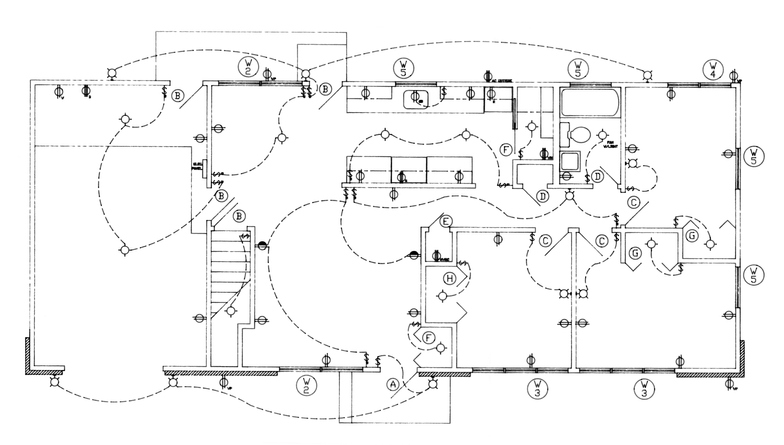
Familiarize Yourself With the Wiring Diagrams and Symbol Legend Before Getting Started
In many electrical layouts, there will be symbols representing various parts, and it’s important to study the symbol legend before you start working. Once you understand the symbols legend, you’ll be able to work faster and more efficiently. The legend will help you understand what the symbols are, what they mean, and where various components need to be. The plans for the project’s electrical components will also likely show diagrams of the paths the wires will take between the different pieces of equipment—important to keep in mind since you will be learning about residential wiring in your maintenance electrician training. This will show you the breakers running each wire, as well as which items within the house (eg. lights) are grouped or phased together onto one breaker.

Your Electrician Training Will Help You to Read Blueprints
All instructions of the electrical layout have to be followed exactly as written—or drawn—and sometimes the information presented can be overwhelming and will require specialized knowledge on electrical components. For example, you’ll need to understand how power across lines will be distributed, as well as the circuit’s flow and critical points where separate wires connect. It sounds like a lot to take in, but it is important information to remember so that the job is done effectively and so that fire, sparks or other hazards can be avoided. Fortunately, in electrician training you will learn how to read blueprints and building layouts, as well as the fundamental principles of electricity. At the end of the day, no part of the layout can be misinterpreted or ignored, and learning about plans and layouts will help you become a better electrician.
Want to get your electrician diploma?
Contact North American Trade Schools to find out more!
What to Know About Conduit Bending for Your Career After Electrician College
September 12, 2019
Conduit bending is an essential skill electricians learn during their training. Various materials from rigid steel to EMT (electrical metallic tubing) will call for bending at some point or another. If you’re studying to become an electrician, there are numerous reasons why this is an important skill to have under your belt.
While you’ll be taught about conduit bending during your courses, it’s good to have some idea of what it is beforehand. Here’s what students in electrician college need to know about conduit bending.
There Are At Least Four Different Ways You Can Bend It
With regards to conduit bending, there are several methods you can choose to get the job done. Among them are the 90º (also known as the “stub up” bend), back to back, offset, and the saddle bend. The stub-up bend is where one end of the conduit is bent upward into a 90º L shape. Back to back bends are where parallel stub-up bends are made to a 90º angle on both sides, making a U shape.
An offset bend is where a shift is made somewhere along the conduit even though the bend continues to run parallel to where it was initially. Lastly, the saddle bend is where one portion of the conduit is bent at 45º over an obstacle before returning to its original plane. You’ll learn to develop your conduit bending skills during maintenance electrician training.

Bending Conduit Involves a Lot of Marking
After you’ve undergone the first step of selecting the proper bender and removing cutting burrs if necessary, you’ll need to mark the points on the conduit for bending it properly. You’ll then need to decide where the conduit should start, the necessary length of the bend, and where you need it to change direction. Then, you’ll need to mark the bend’s midway point before measuring to make sure those marks will bend correctly, and then mark another line on the floor.
In other words, make sure you buy yourself a Sharpie if you want to be an electrician! However, if your bend is for exposed work like in factories, use a pencil instead to prevent the ink from bleeding through after the conduit is painted.
You’ll Want a Good Bender After Electrician College, But it’s Not the Only Tool You’ll Need
Whether it’s made of steel or aluminum, it should go without saying that having a good bender to use after getting your electrician diploma is important. However, aluminum ones are preferred over steel, as the latter type is a lot heavier. It’s also very useful for newer electricians to have a handle as well as multiplier markings on the bender, to streamline the calculation process.

While a bender is easily the most essential tool you’ll need here, it’s not the only one. You will need a strong, high-quality level, and ideally one with rare-earth magnets and levels attached to them. Additionally, you will do well to have a tape measure and a framing square on hand, as both will be key in helping ensure you get the correct angles and measurements for the bend.
Do you want to study at an electrician college?
Contact North American Trade Schools to find out more about our programs!
3 Environments You Might Be Working in After Electrician School
September 09, 2019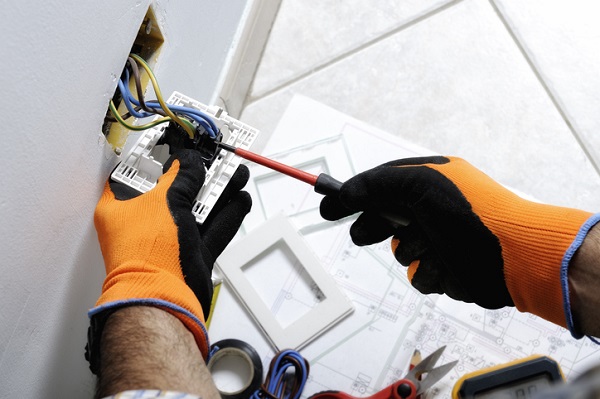
If you’re about to begin a career as an electrician, there are numerous possibilities for where you might work. You could ply your trade in homes, office buildings, construction sites, or industrial factories. Whether you want to work indoors or outdoors, travelling or just at one site, there’s an electrician job for you.
Wherever you end up going, your job remains to ensure electricity safely goes straight from the source to those who need it the most. Here are three places you might find yourself working in after completing your program to become an electrician.
1. You Could Find Yourself Working in People’s Homes After Electrician School
Residential electricians work on wiring and lighting in people’s homes and apartment buildings, among other living spaces. In this career, you could find yourself going to different homes, carrying out the necessary tasks to make sure residential buildings and units have electricity in place, and installing it both indoors and outdoors as necessary.
Your tasks could include determining where equipment and fixtures will be located in the home, working on security and air conditioning systems, and ensuring electricity can travel from the source to the home’s circuit breaker. Whether you’re working on an existing home, or one that’s still being constructed or undergoing renovations, you’ll be able to work on electrical wiring and fuses to keep tenants and families happy and their homes running smoothly.
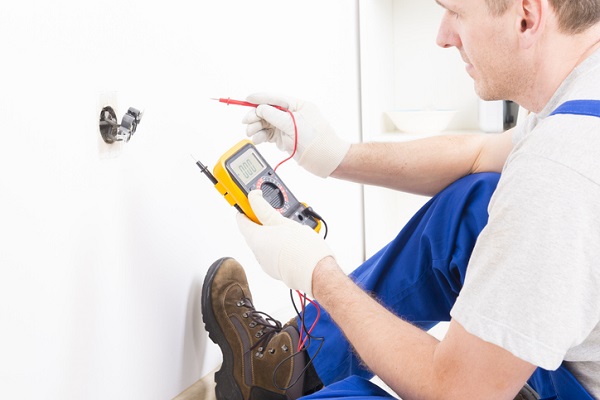
2. You Could Work in Any Environment Specializing in Maintenance
If you you’re the type of person who likes fixing things that are broken or not working properly, being a maintenance electrician may be the route for you. Travelling and commuting between different worksites is common for people in this job, so you could find yourself working in various environments. If you want a job where your workplace will change every day, this job could be a great fit.
As a maintenance electrician, you could be performing tasks like troubleshooting using testing devices, performing preventative maintenance, rewiring connections or electrical equipment in homes or businesses, or working on equipment in factories or manufacturing units. Regardless of where exactly your career after studying to become an electrician takes you, your problem-solving skills and ability to carry out the necessary maintenance procedures will serve you well if you want to become a maintenance electrician.
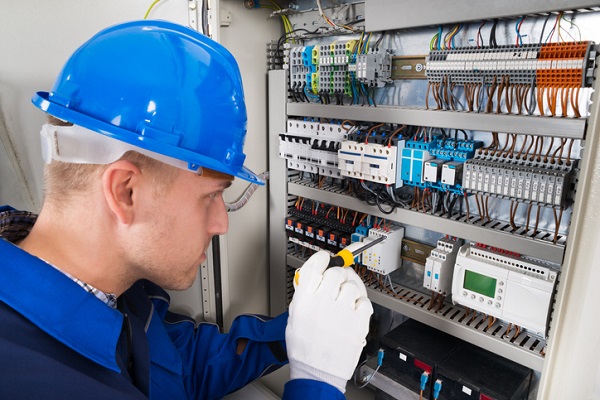
3. You Could Work in Office Buildings (or Outside Them) as a Commercial Electrician
Businesses need light and electricity during the work day and sometimes even at night, so they need commercial electricians to help set up their electrical systems and keep them running. In this environment, you could be installing lighting, wiring, and/or control and security systems, while adhering to all safety requirements.
Alternatively, you could work as an electrician on a construction site where a new office building is being built, or at a factory as an industrial electrician where you may work on hydraulic and other machinery. Regardless, whether you work in a small corner of an office building or a wide-open construction space, your career after electrician school can lead to you working for a number of successful businesses.
Want to get your electrician diploma?
Contact North American Trade Schools to learn more about our programs!





